AIR TRANSPORT Post-Covid cabin design
Cabin fever
As the airline sector reels from the Covid-19 pandemic, JOHN WALTON examines the changes to the passenger experience coming to an airline cabin near you.
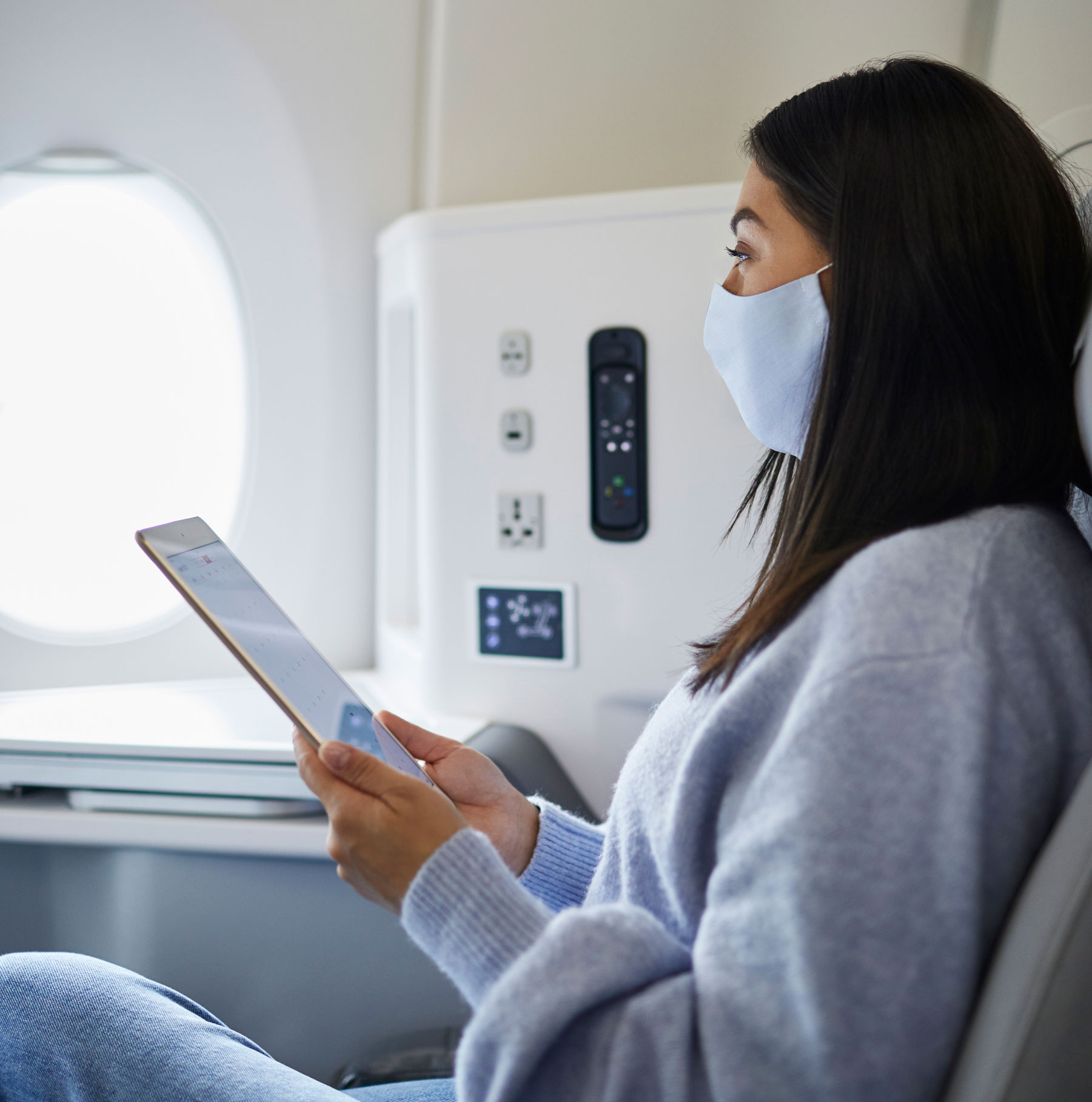 Finnair
Finnair
It is clear that Covid-19 will change the fundamental make-up of the commercial aviation industry in ways that are both eminently clear and as yet impossible to conceive. It is a paradox that will be complicated for an industry that is renowned for its rather wide turning circle in terms of change. As the conversation shifts from crisis management to planning for the vaccine-enabled recovery, the need for airlines – and every other player in the industry – to innovate out of this crisis is evident.
This pandemic and its effects will change the design of seats and the cabin but not in the ways that were originally thought. Covid-19 has had, and will continue to have, an accelerating effect on many parts of our lives, from the adoption of videoconferencing technology to the growth of remote-first working, through to the retirement of older and less efficient aircraft and a round of industry consolidation.
The cabin and the passenger experience are no different: the green shoots of change have seen accelerated growth in some areas, while technologies that had been ignored as unnecessary or too expensive are being adopted wholesale.
A different look at the cabin
As the pandemic took hold in early to mid 2020, cabin designers, seat makers and other players in the industry pivoted swiftly to starting to develop hard product changes to the cabin: new ways of arranging seats, dividers of all kinds, hygiene bubbles, touchless lavatories and a myriad of others.
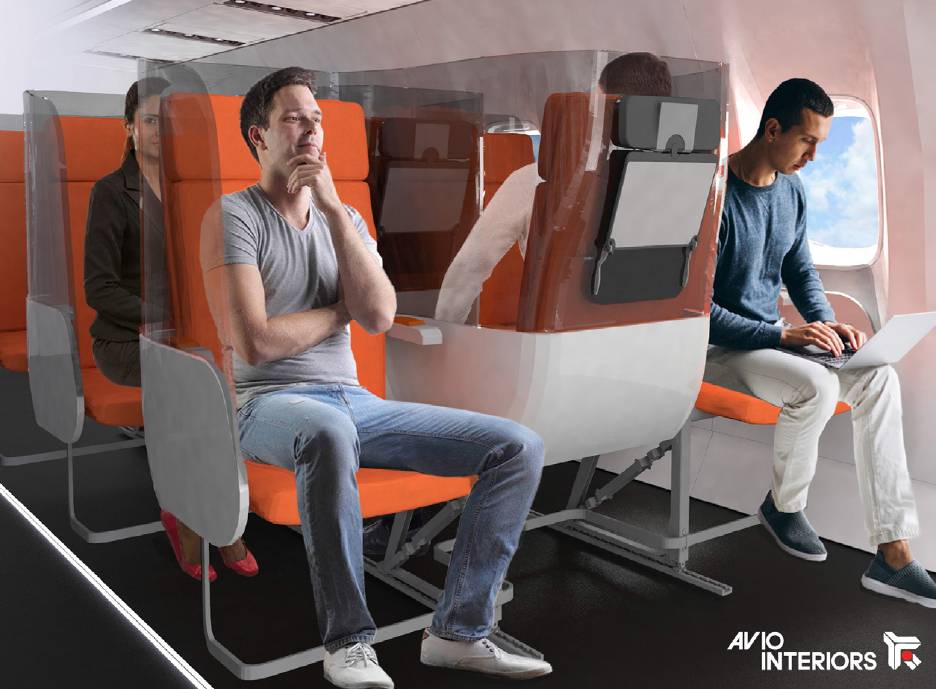 Avio Interiors
Avio Interiors
Fundamentally, though, the principal change on the part of airlines has been to clean surfaces more thoroughly and to talk about it. Whether this is the most effective intervention for a virus that is increasingly seen as spreading more via the airborne/droplet/aerosol route than formite/touch will be something for the industry and public health experts to examine at a later date.
At Collins Aerospace, says David McConnell, Associate Director for Advanced Materials and Processes, “we are making sure we understand the critical factors surrounding cleanliness and how customers plan on cleaning/disinfecting seats. Fogging or electrostatic spray is becoming a more common practice and is more of a full cabin treatment versus hand cleaning of specific features. This pushes our design to consider access to certain features and also prevents cleaners from going where they shouldn’t.”
“The trend towards ‘cleaner’ will speed up an existing move towards less complexity in the seat,” predicts Daniel Baron of LIFT Aero Design, an aircraft cabin design studio with offices in Tokyo and Singapore, citing an expected “reduction in number of parts, elimination of crevices and steps, et cetera.”
This is, Baron says, “driven by the need to shed weight, simplify supply chains and make the lives of cabin cleaning crews easier. For example, a seemingly small detail such as a gap around a table inlay can, over time, become quite a headache for cleaners. This is not new. What is new is that the appearance of dirt now has the potential to connote ‘we don’t care about your health’.”
The antimicrobial attack
One key weapon in the arsenal against Covid-19 – and indeed future pandemics, as well as existing more pedestrian bacteria and viruses – is incorporating antimicrobial products into new seat surfaces, as well as developing coatings that can be applied which actively kill microbes on contact.
“We are looking into antiviral coating and we will be offering (it) to our customers soon,” says Mark Hiller, the Chief Executive Officer of German seat maker, Recaro. “This has been a priority for us and we are focusing on solutions which can be used on different materials. Further minimising gaps and cavities, and material selection is definitely important. This is going to play a bigger role in future developments. We anticipate new requirements due to the need for more frequent cleaning cycles, which will require a higher resistance for cleaning and ensure no negative effects on functionality.”
WHAT IS NEW IS THAT THE APPEARANCE OF DIRT NOW HAS THE POTENTIAL TO CONNOTE ‘WE DON’T CARE ABOUT YOUR HEALTH’.
The effects of cleaning chemicals being applied more frequently and potentially in conflict with other chemicals, Hiller notes, “is certainly an area of concern. Plastics can be especially affected by certain disinfectants. Because of this, we have started an extensive testing campaign in the summer with different disinfectants and made recommendations on which are good to use to our customer base.”
While many of them have been used in other public environments like cruise ships, medical facilities and shopping centres, few of these inherently antimicrobial products have been tested against the SARS-CoV-2 coronavirus, or indeed in the unique cabin environment, with MGR Foamtex’s MGRSafeWall product that uses the Biomaster silverion antimicrobial action a recent breakthrough.
Collins Aerospace has been working with industry, regulators and associated bodies like the SAE (formerly the Society of Automotive Engineers), NIAR (National Institute for Aviation Research) and the FAA, says the company’s David McConnell. “We tested many of the common cleaners/disinfectants on a range of common interior substrates such as plastics, fabrics and textiles for criteria such as flammability, strength and aesthetics.”
Indeed, a recent SAE letter to the industry stated that: “the recommendations, based on the test results to date, have been determined by concluding minor performance differences in agent-treated materials and are not significant enough to alter the continued airworthiness of the products when compared to untreated materials. Some degradation in visual appearance is to be expected with the repeated use of these agents and parts may need to be replaced over time.”
Better by design?
But, from a design perspective, asks designer Ben Orson, “Is there a trend towards cleaner seats? We’ve seen some intriguing concepts but it may be too early to say if a trend has been established. From our RedCabin polling, we saw a very high level of scepticism around the idea that many of the ‘antiCovid’ concepts that we have seen over the past nine months will ever become established in the market.”
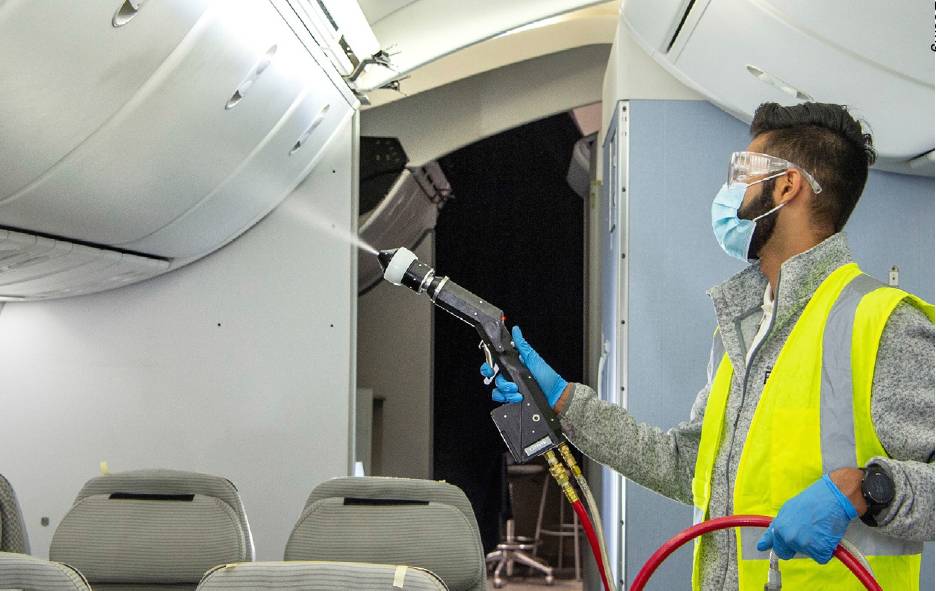 In 2020 Boeing and the University of Arizona conducted a research study with a ‘live safe virus’ that confirmed that existing cleaning procedures and chemicals are effective in killing Covid-19. Boeing
In 2020 Boeing and the University of Arizona conducted a research study with a ‘live safe virus’ that confirmed that existing cleaning procedures and chemicals are effective in killing Covid-19. Boeing
If structural change is unlikely, incremental and elemental improvements are almost certain. The way seats are constructed will need to change, whether that is to add antimicrobial materials to surfaces, move away from small storage spaces to open, seethrough (and drop-through) design, or to account for the impact of cleaning chemicals on the seats and their components themselves.
If there are no major changes to the way cabins are laid out, seats are separated, and so on, Recaro and other industry players are expecting to receive requests to modify existing seats to increase their ‘cleanability’, with drop-through stowage spaces replacing closed ones, hooks or ledges rather than nooks or crannies, open storage instead of closed, and so on.
“Our impression is that the vendors will wait to see how a vaccine affects attitudes to the coronavirus and therefore demand for air travel before committing to significant redesign of established products,” says Ben Orson. “Investment in these sorts of changes is likely to be a challenge for seat makers for a period given the fall in demand from airlines. Currently, we do not see that push yet,” concurs Recaro’s Mark Hiller, “but we are convinced that it will come. We are preparing for this and are currently proactively working on different ideas and adaptations.”
Some of this will change the way that seats quite literally look and feel. “At this time, airlines should focus on designing for an non-tactile experience,” advises Geraint Edwards, Head of Service Design at London-based Tangerine, a design studio.
“Luxury traditionally meant course textures, opulent materials and patterns, and over-the-top placement of luxury items like curtains,” Edwards explains. “There will surely be a ‘new normal’ sterile experience where the staff are trained to deliver a service that creates a feeling of wellness and safety for the passengers and where the materials are valued for their ability to be cleaned and to be perceived to be free of bacteria.”
Material differences
Yet, of all the programmes Tangerine is currently working on, none of the material allocations for items like thermoplastics or textiles have changed.
“It would be interesting to hear from airlines if the new cleaning protocols have affected any of their materials,” Edwards notes, “as we have heard mutterings in the industry that corrosion is occurring more rapidly. We wonder if the coatings that are being introduced are more for marketing purposes. We are not sure how much difference they will make or how long they last.”
Indeed, more research on this latter question is certainly required, including big-picture and real-world testing that examines the interactions between actual wear, a variety of cleaning products and the cabin environment.
OUR IMPRESSION IS THAT THE VENDORS WILL WAIT TO SEE HOW A VACCINE AFFECTS ATTITUDES TO THE CORONAVIRUS AND THEREFORE DEMAND FOR AIR TRAVEL BEFORE COMMITTING TO SIGNIFICANT REDESIGN OF ESTABLISHED PRODUCTS
In the meantime, explains David Voskuhl from German cabin supplier Diehl Aviation, “we are predominantly looking at surfaces when it comes to enhancing cleanliness in aircraft cabins. To start with, our efforts for providing touchless cabin functions will help because touching less also means less need for cleaning. Beyond that, using UV-C technology for disinfection will help to enhance hygiene on board.”
Diehl is realistic about the extent that it will be able to make change here in the serious budgetary crunch in which most airlines are finding themselves, however. “As we all know,” Voskuhl says, “most airlines are currently in challenging financial situations, which makes it difficult for them to raise resources for modernising their cabin interior spaces. We are trying to meet their requirements for enhanced hygiene under affordable conditions.”
The amplifying effects of the Covid crisis, especially around demand, will be massive for airlines and what they offer on board.
For airlines, the pandemic is part regulatory – they simply are not permitted to fly in some cases – part massive demand hole, and part unprecedented economic crisis.
In some countries and regions that have got a handle on Covid, such as China, New Zealand and Australia, the first two factors are in some cases relaxing, although at the time of writing, for example, Qantas had cancelled all international flights well into 2021. As vaccination programmes gather speed, though, airlines will be left with the economic crisis as the primary driver for the short to medium term.
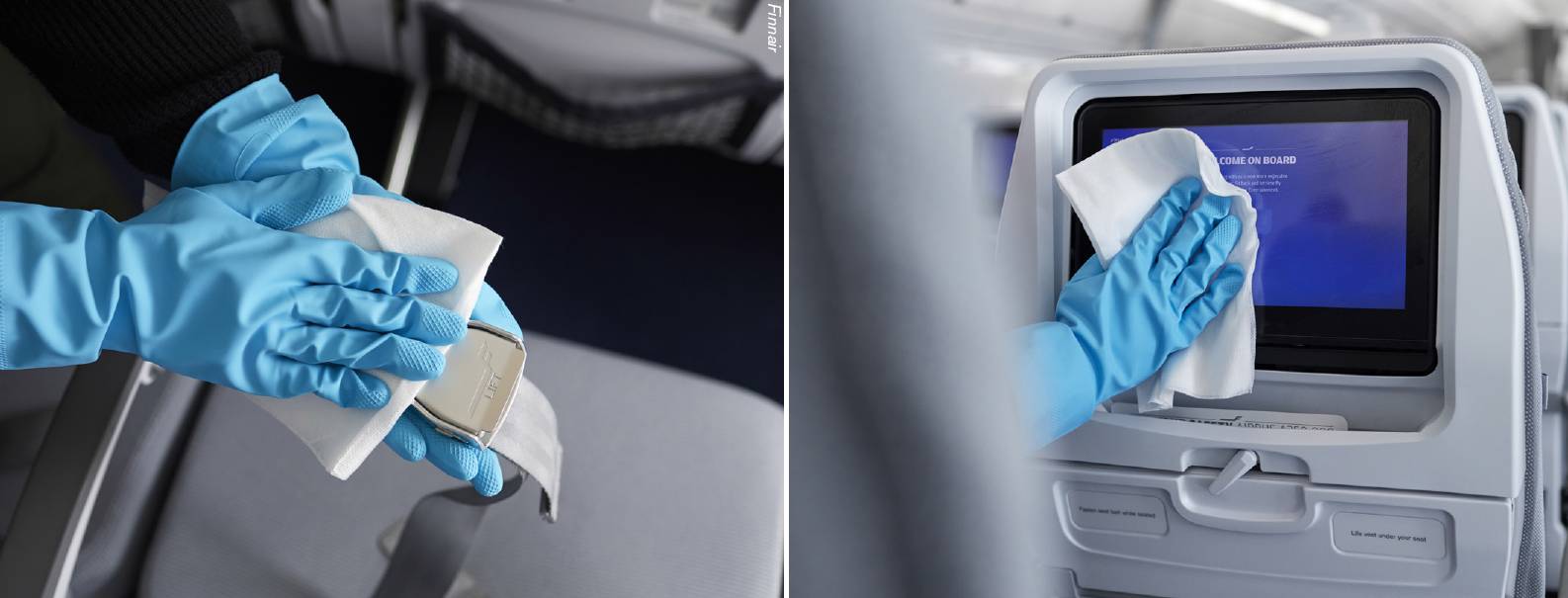 Finnair safety hygiene shown in the on-board cleaning of IFE screens. Finnair
Finnair safety hygiene shown in the on-board cleaning of IFE screens. Finnair
Different classes
Within the aircraft cabin, even the medium term of five years or so is too short to radically redesign what goes on board. For the four principal classes of travel – economy, premium economy, business and first-class – what we have now is essentially what we will be using during the Covid recovery phase.
Matt Round, Chief Creative Officer at Tangerine, starts at the front of the aircraft. “As business class products have become better and better, we are seeing more airlines eschewing first class. For most airlines this is a matter of balancing brand positioning with the combined profitability of all their cabins.”
In essence, some more premium airlines are likely to continue offering first-class, simply because these seats are so very profitable when the ultrarich pay for them – or as a perquisite to attract very frequent flyers and their loyalty points. However, for business travellers, “as customers re-evaluate their spending, the space that premium economy fills has the potential to attract greater passenger numbers. However, the challenge for the airlines is not to allow premium economy to cannibalise revenue from other products. So what we may see, is a more à la carte set of choices for the products and services that passengers can purchase,” Round says.
In essence, we are looking at the potential unbundling of products throughout the aircraft, in the same way that the ‘basic economy’ trend unbundled the cheapest seats on the aircraft. Qatar Airways and Emirates have already started this process with what the Dubai-based carrier calls special fares: no lounge access without frequent flyer status, advance seat selection or chauffeur drive, reduced points earning, no upgrades, and so on.
“Business class remains the most significant premium offer,” says designer Ben Orson of the eponymous Orson Associates. “The line between business class and first class will continue to blur with recent concepts from Thompson and Safran enabling this and smaller, long-range aircraft encouraging a reassessment of how the first class can be delivered in a more compact footprint.”
These seats include, in front rows in particular, what has been termed as ‘business-plus’ seating. Since all rows but the frontmost nestle into the seat in front of them in either a staggered or herringbone configuration, the front row can offer more space. Seat makers have suggested premium sub-products that make the most of this: an added suite door, for example, or a larger screen, bigger side table, and so on, with some airlines like China Eastern already plumping for these pumped-up products.
Further back in the aircraft, there is movement too, Orson says. “According to data gathered at RedCabin (a passenger experience conference in December, online this year), the industry expects to see increased focus on innovation in the premium economy/economy class range driven by the increased significance of single-aisle aircraft in the global fleet and the requirement on the part of businesses and individuals to contain spending.” And there’s the rub.
Still travelling for business?
The way businesses and individuals travel on business is going to diversify – fast. One of the greatest challenges that the aviation industry will have to face after Covid-19 turns from health emergency to economic crisis is the changing nature of business travel. An entire generation of knowledge workers whose jobs largely revolve around a desk will have had a year or more to get used to Zoom, Teams and so on. With a financial crunch it is clear that, in the same way that people joke “could this meeting have been an email?”, people will be asking very seriously “could this business trip have been a Zoom call?”
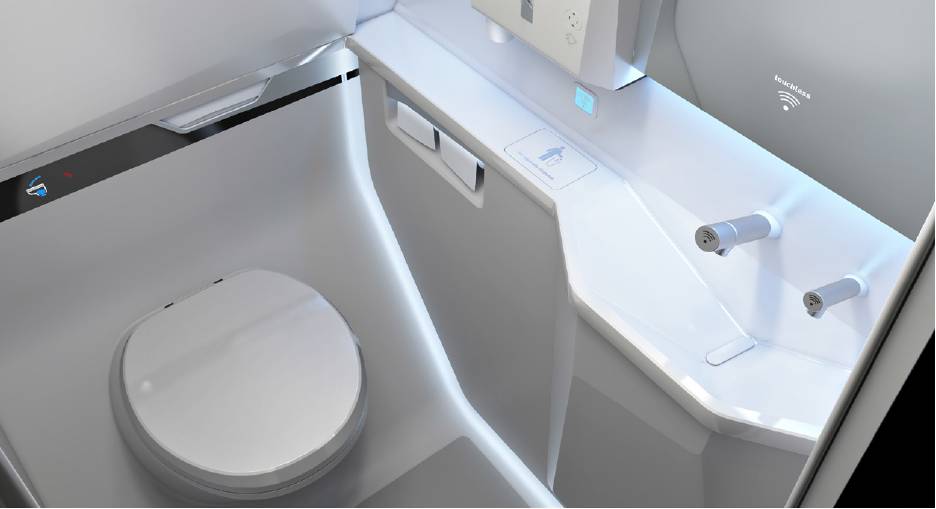 Diehl’s touchless lavatory. Finnair
Diehl’s touchless lavatory. Finnair
“Unlike previous crises,” says Ben Orson, “the Covid pandemic comprises multiple distinct challenges for the aviation sector: fear of infection on board or at the airport, a significant drop in the ability and willingness of businesses and individuals to spend on travel, worldwide and ongoing border restrictions and increasing confidence in virtual meetings as an alternative to business trips.”
Designer Daniel Baron concurs: “9/11 was a disruption without a viable alternative for business travel. The difference now is that voice and video are cheap. Fortunately, they can never fully replace face-to-face. Nuance in things like eye contact, facial expressions, gestures and humour will always matter and the ability to do a spontaneous, quick side meeting with a colleague during a crisis can literally save the day,” he says. “It is possible that the classes used for business trips will not change,” Baron notes. “The customer will still need to be well-rested – but there will be fewer trips.
Indeed, the acceleration of the trend towards remote-first, work-anywhere hiring will also affect aviation but this may well not end up being a net loss. It has been clear to any office worker that, while there are some benefits to working from home, there are equally benefits to being present with colleagues, especially for interaction-heavy strategic, brainstorming or team building experiences.
Instead of, say, half of a 50-person company travelling all from one or two airports to work together, proportionally more of them are likely to be travelling from dozens. Headquarters footprints will reduce, leading to a need for on-demand and ad hoc offsite options for in-person group work.
This will affect the way corporate travel works. While previously a London-based company would have had a natural affiliation with British Airways for long-haul travel, BA’s history of abandoning UK regions may mean that an airline like KLM, with its extensive countrywide network, may be a better choice.
On the aircraft, Ben Orson imagines, “we might see renewed interest in addressing the enduring ‘comfort canyon’ between economy and business. The diversity of products in this space remains limited, in part due to a lack of interest from airlines to date. We see significant opportunities here for innovative future products, providing airlines with opportunities that may prove to be better aligned with new profiles of passenger demand.”
By 2025, the aviation industry’s predictions are by and large that it will be back on track. But behind the Covid-19 crisis looms the greater climate crisis, as well as future challenges we do not yet know about and in some cases can not even imagine. Indeed, by that time, Airbus plans to have made a decision about its first steps into hydrogen power for aircraft and we may be standing at the dawn of one of the greatest changes to aviation since the jet age.
 Finnair
Finnair Avio Interiors
Avio Interiors

